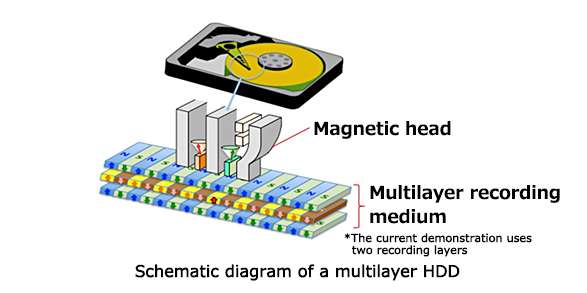Magnetic Storage: A Pioneer in Data Preservation
In a digital era marked by incessant information exchange, the persistent preservation of data presents a paramount challenge. Magnetic storage has emerged as a cornerstone of this preservation architecture, offering a reliable and durable solution for safeguarding digital assets, ranging from precious memories to critical business information. Among the illustrious examples of magnetic storage devices, the hard disk drive (HDD) stands as a ubiquitous marvel, enabling seamless data accessibility and retrieval for an ever-expanding digital society.

Image: www.flickr.com
Exploring the Depths of Magnetic Storage
Magnetic storage operates on the fundamental principle of magnetism, harnessing the properties of ferromagnetic materials to encode digital data by magnetizing their microscopic domains. The orientation of these domains, either parallel or antiparallel, effectively represents the binary digits (bits) that comprise the digital information. During the read operation, a sensor detects the magnetized domains, faithfully reconstructing the original data.
HDDs, the workhorses of the storage industry, employ a series of rotating disks coated with a ferromagnetic material. A read/write head suspended over the rotating disks magnetizes specific domains on the disk surface, inscribing data patterns. When reading data, the head detects the magnetization patterns, translating them back into the digital realm.
Unveiling the Advantages of Magnetic Storage
- Excellent Durability and Longevity: Magnetically stored data retains integrity over extended periods, withstanding environmental factors and accidental damage.
- Cost-Effectiveness: Magnetic storage offers an economical solution for vast data volumes, making it a mainstay for cloud storage and enterprise applications.
- High Data Density: HDDs continue to enhance areal density, packing immense data capacities into compact form factors.
- Wide Compatibility: Magnetic storage enjoys universal compatibility across multiple platforms and devices, ensuring seamless data exchange.
Emerging Trends in Magnetic Storage
Driven by growing data demands, the domain of magnetic storage is constantly evolving, yielding innovative technologies that push the boundaries of storage capabilities.
- Heat-Assisted Magnetic Recording (HAMR): HAMR utilizes lasers to heat localized areas on the disk surface, enabling magnetization of smaller domains and unlocking higher data densities.
- Microwave-Assisted Magnetic Recording (MAMR): MAMR employs microwaves to excite magnetic domains, providing an alternative approach to HAMR with comparable density improvement potential.
- Nanoparticle Magnetic Recording (NP-MR): NP-MR seeks to employ ultra-small magnetic nanoparticles for data encoding, aiming for exponential increases in areal density and reduced power consumption.

Image: phys.org
Expert Tips for Utilizing Magnetic Storage
Optimizing the utility and longevity of magnetic storage solutions entails adhering to a few key best practices:
- Regular Data Backups: Implement a robust backup strategy to safeguard against data loss due to device failure or accidental deletion.
- Secure Data Encryption: Encrypt sensitive data stored on HDDs to prevent unauthorized access and potential data breaches.
- Proper Handling and Storage: Handle and store HDDs with care, averting exposure to extreme temperatures, physical shocks, and magnetic fields.
Frequently Asked Questions on Magnetic Storage
Q: What is the lifespan of an HDD?
A: With proper care, an HDD can typically last several years, though environmental factors and usage patterns can impact its longevity.
Q: What causes data loss on HDDs?
A: Data loss can occur from physical damage to the drive, logical failures in the file system, or malware infections.
Q: How can I format an HDD?
A: Connect the HDD to a computer, launch the Disk Management utility, and follow the “Format” instructions specific to your operating system.
A Hard Disk Drive Is An Example Of Magnetic Storage
Invitation for Reader Engagement
Thank you for accompanying us on this exploration of HDDs, a vital aspect of magnetic storage. We sincerely hope that this article illuminated the concepts and nuances of this technology. We extend an open invitation to engage further with the topic. Share your insights, pose questions, and participate in the ongoing discourse surrounding magnetic storage. Your contributions will undoubtedly enrich our collective knowledge and propel us towards continuous learning.